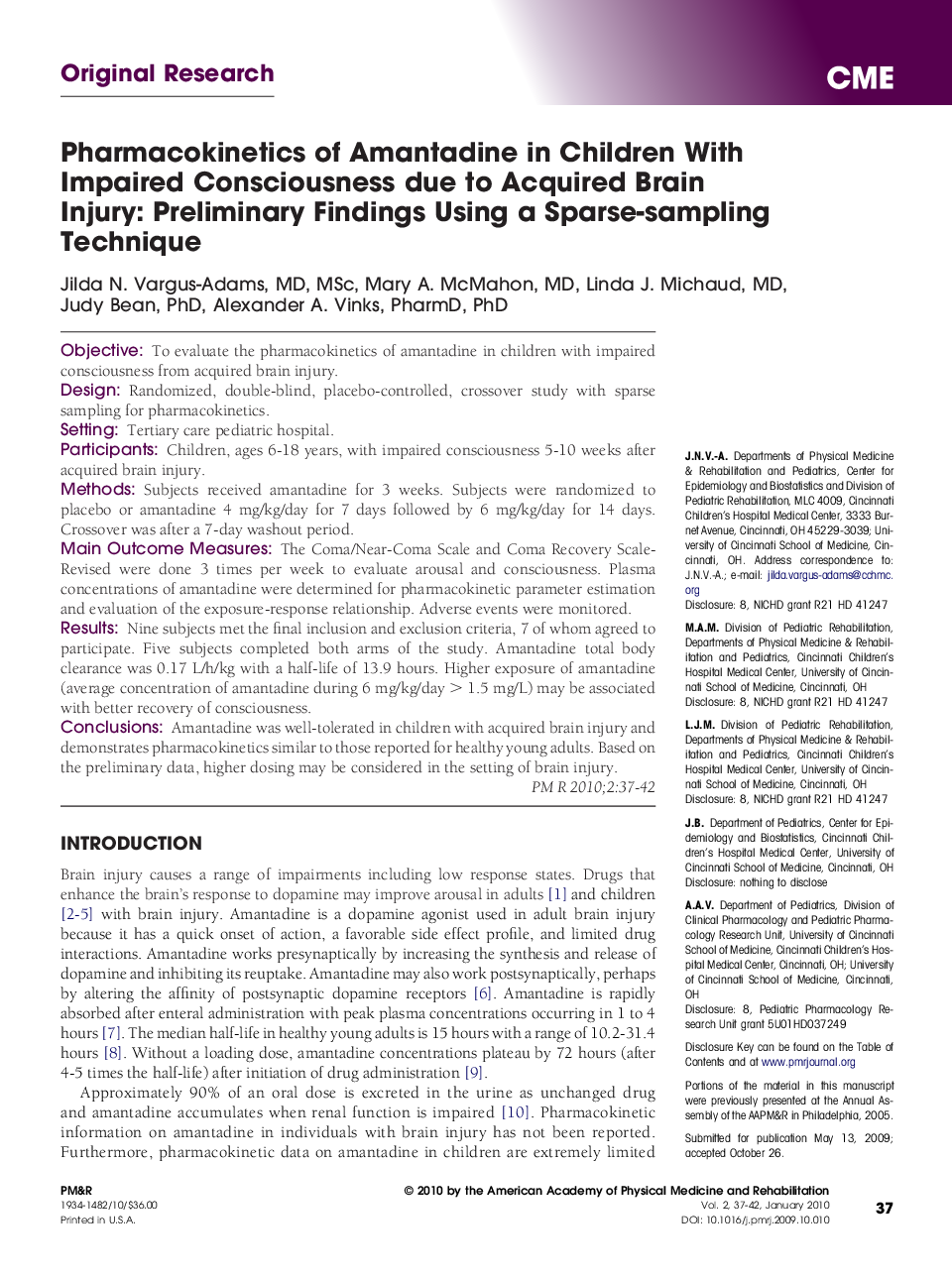| Article ID | Journal | Published Year | Pages | File Type |
|---|---|---|---|---|
| 2706588 | PM&R | 2010 | 6 Pages |
ObjectiveTo evaluate the pharmacokinetics of amantadine in children with impaired consciousness from acquired brain injury.DesignRandomized, double-blind, placebo-controlled, crossover study with sparse sampling for pharmacokinetics.SettingTertiary care pediatric hospital.ParticipantsChildren, ages 6-18 years, with impaired consciousness 5-10 weeks after acquired brain injury.MethodsSubjects received amantadine for 3 weeks. Subjects were randomized to placebo or amantadine 4 mg/kg/day for 7 days followed by 6 mg/kg/day for 14 days. Crossover was after a 7-day washout period.Main Outcome MeasuresThe Coma/Near-Coma Scale and Coma Recovery Scale-Revised were done 3 times per week to evaluate arousal and consciousness. Plasma concentrations of amantadine were determined for pharmacokinetic parameter estimation and evaluation of the exposure-response relationship. Adverse events were monitored.ResultsNine subjects met the final inclusion and exclusion criteria, 7 of whom agreed to participate. Five subjects completed both arms of the study. Amantadine total body clearance was 0.17 L/h/kg with a half-life of 13.9 hours. Higher exposure of amantadine (average concentration of amantadine during 6 mg/kg/day > 1.5 mg/L) may be associated with better recovery of consciousness.ConclusionsAmantadine was well-tolerated in children with acquired brain injury and demonstrates pharmacokinetics similar to those reported for healthy young adults. Based on the preliminary data, higher dosing may be considered in the setting of brain injury.
